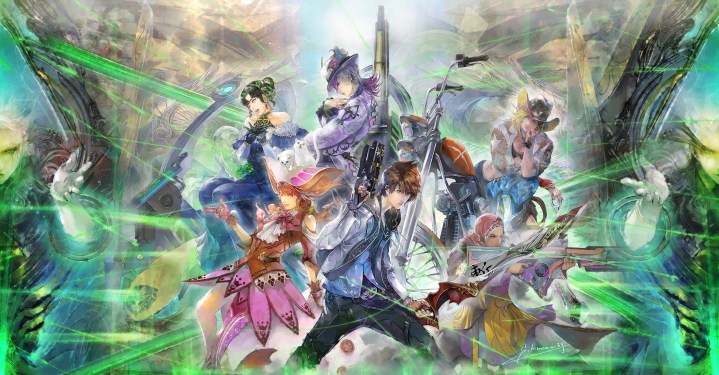
The video game demo is starting to come back into fashion.
Companies like Sony and Nintendo are offering demos for some of their biggest games of the year, like Stellar Blade and Princess Peach Showtime!, respectively. Not all demos are made equally, though. It can be difficult to get the feel of an entire game across in a demo featuring a small part of the experience; the brevity of Nintendo’s recent demos has been especially frustrating. That’s why Square Enix’s approach to releasing a demo for SaGa: Emerald Beyond sticks out to me so much.
SaGa: Emerald Beyond is the latest entry in a long-running RPG series that’s never quite reached the mainstream heights of its siblings, Dragon Quest and Final Fantasy. It’s a big RPG with many different playable characters, gameplay systems, and worlds to visit. It’d be hard to distill all that into just one demo, so Square Enix didn’t do that. It made three demos instead.
Three is better than one
When first booting up Emerald Beyond at launch, players will have to choose one of six main characters to begin their adventure with. From there, they’ll set off on an adventure through a series of interconnected worlds, molding the story with their choices, partaking in timeline-based RPG battles, and accruing new party members along the way. There’s freedom in choosing which of Emerald Beyond’s 17 worlds to go to, as well as which objectives to pursue once you’re in a given overworld. This is a game that Square Enix wants people to play through multiple times, as Emerald Beyond is supposed to offer a very different experience each playthrough.
You can see from that high-level pitch alone how all that variance would be hard to capture in a demo. SaGa franchise localization director Neil Broadley admitted as much on X ahead earlier this month. “How do you get across the key points of what makes SaGa unique without simply saying, ‘Here’s the whole game, have fun?’ It’s hard to get across the full scope of this game in a demo,” he tweeted. Broadley credits Emerald Beyond’s lead project manager with coming up with the idea to release three separate demos for the game.
On April 4, Square Enix released a SaGa: Emerald Beyond demo on PC, PS5, and Nintendo Switch, but they weren’t all the same demo. Each has a different playable protagonist: Steam’s demo follows songstress Diva No. 5, the PS5 demo stars Miyako Immpersial University student Tsunanori Mido, and the Nintendo Switch one is focused on the white witch Ameya Aisling. Each of these demos follows the characters’ unique story introduction and gives players multiple choices on the first world they want to visit after that. All these characters play differently, too; for example, Ameya must find cats scattered around the overworld to regain some of her magical abilities and skills.

Each demo almost feels like a unique game, even though they’re all slices of the same pie. It might seem like an odd choice that Square Enix didn’t just bundle all of this into a single demo, but I agree with Broadley that this demo approach makes more sense for the game. Emerald Beyond is a very dense RPG, even after playing all three demos, I still feel like I have just scratched the surface of the action timeline manipulation, retinue, and formation systems at the center of its RPG combat. It’d be overwhelming if I had to deal with learning all of that and had three main character choices right from the start.
That’s a problem for people who purchase the full game without playing a demo. Locking the demo to a single character on each platform means players only have to worry about learning Emerald Beyond’s intricacies with one character. Then, if they want more, seeking out the other demos on different platforms and seeing how the adventure differs adds to the feeling of replay value that Square Enix wants players to know the final game has.
Broadley admits that the demos still don’t capture the entirety of what Emerald Beyond has to offer. He explained on X that repeatable battles were removed so players couldn’t grind to max level before the game’s release, that the world players can visit from the start of the game isn’t “completely set in stone,” and that visiting a location multiple times throughout various players can change up story beats. Plus, there are protagonists in the full release that aren’t featured in any of these demos.

It’s extremely difficult for a demo to capture 100% of a game’s feature set, even if you make three of them. But they don’t necessarily need to. Demos are ultimately marketing tools that whet people’s appetite for upcoming games. The best ones paint as clear of a picture as possible, even if it’s impossible for them to use the whole canvas.
A single Emerald Beyond demo may have felt too dense to parse or not gotten across the emphasis of replay value, but this unique three-demo, three-platform approach did. Because of Square Enix’s approach, the RPG went from being a game I did not care about to one I’m very interested in.
SaGa: Emerald Beyond launches for PC, PS4, PS5, Nintendo Switch, iOS, and Android on April 25.




